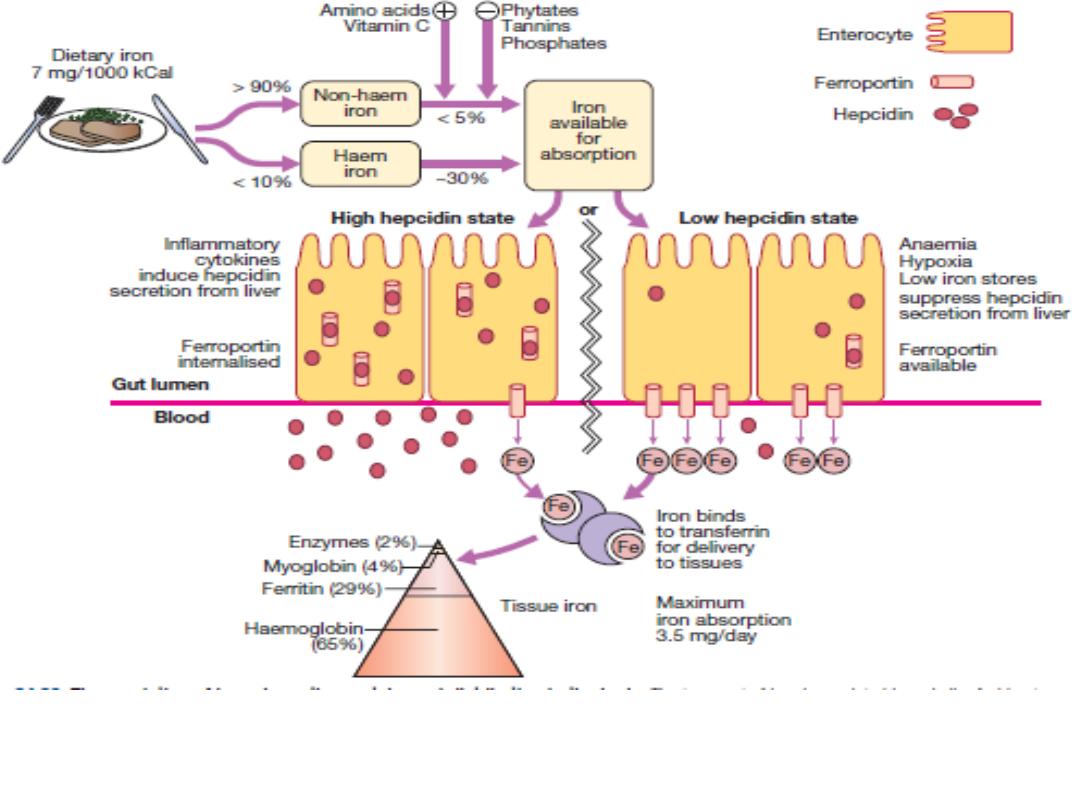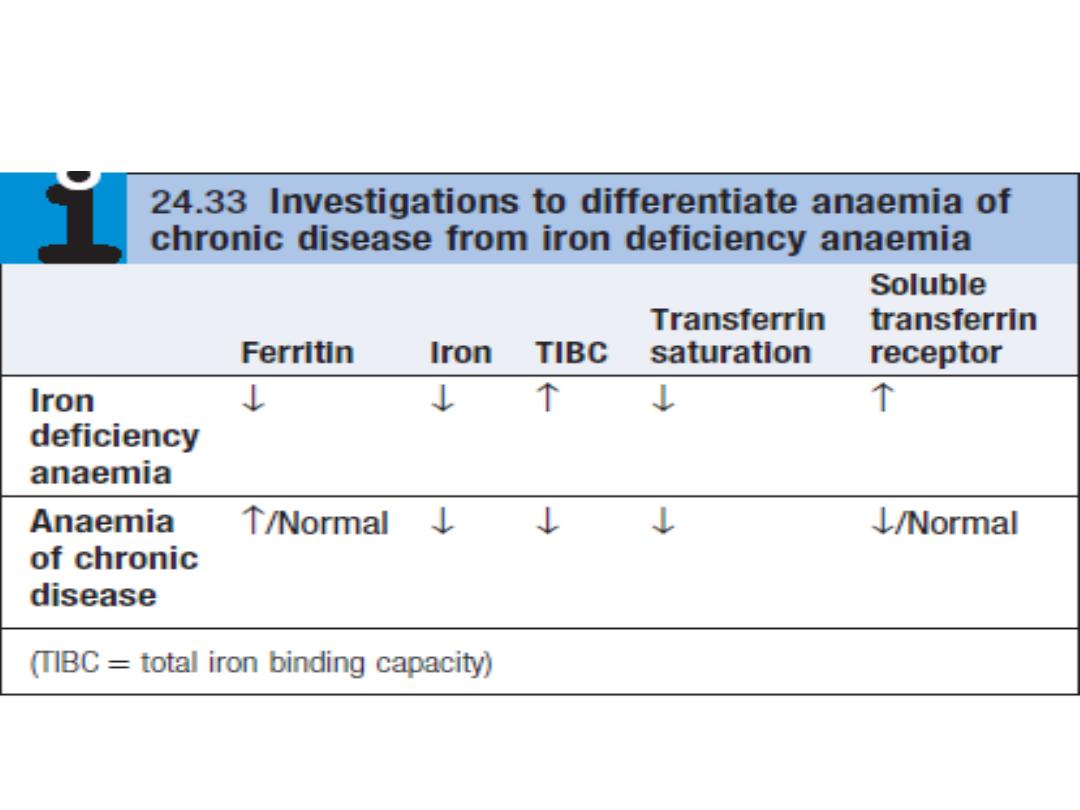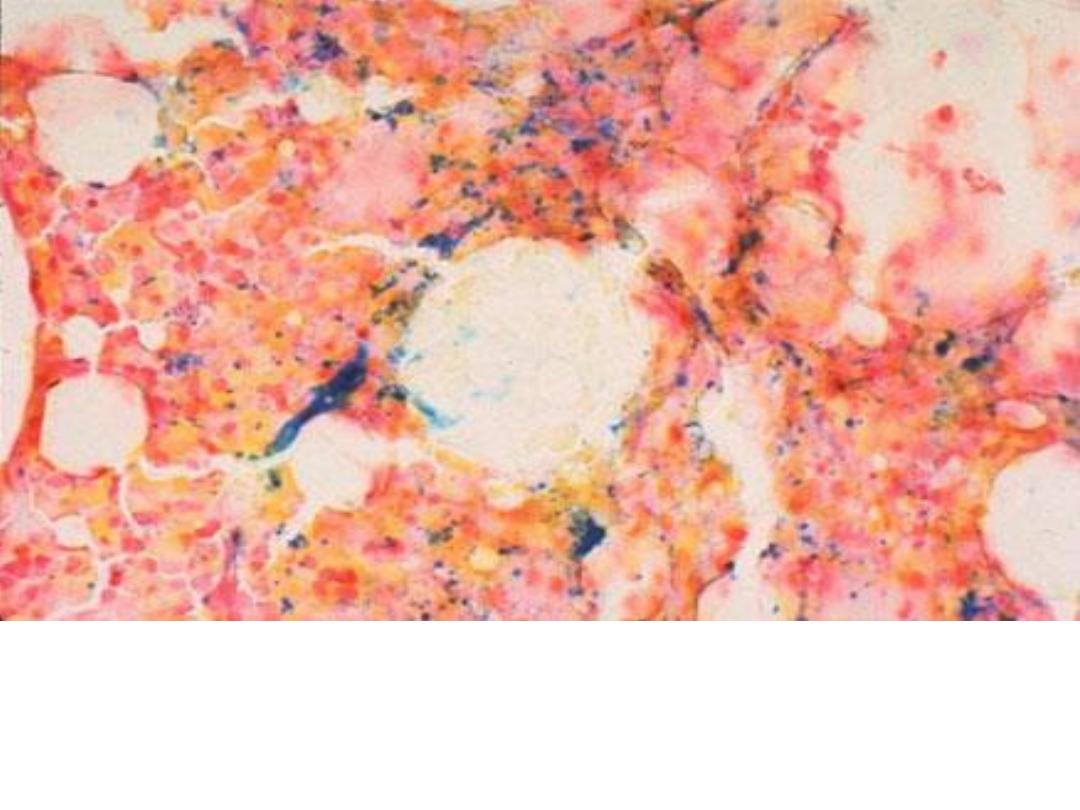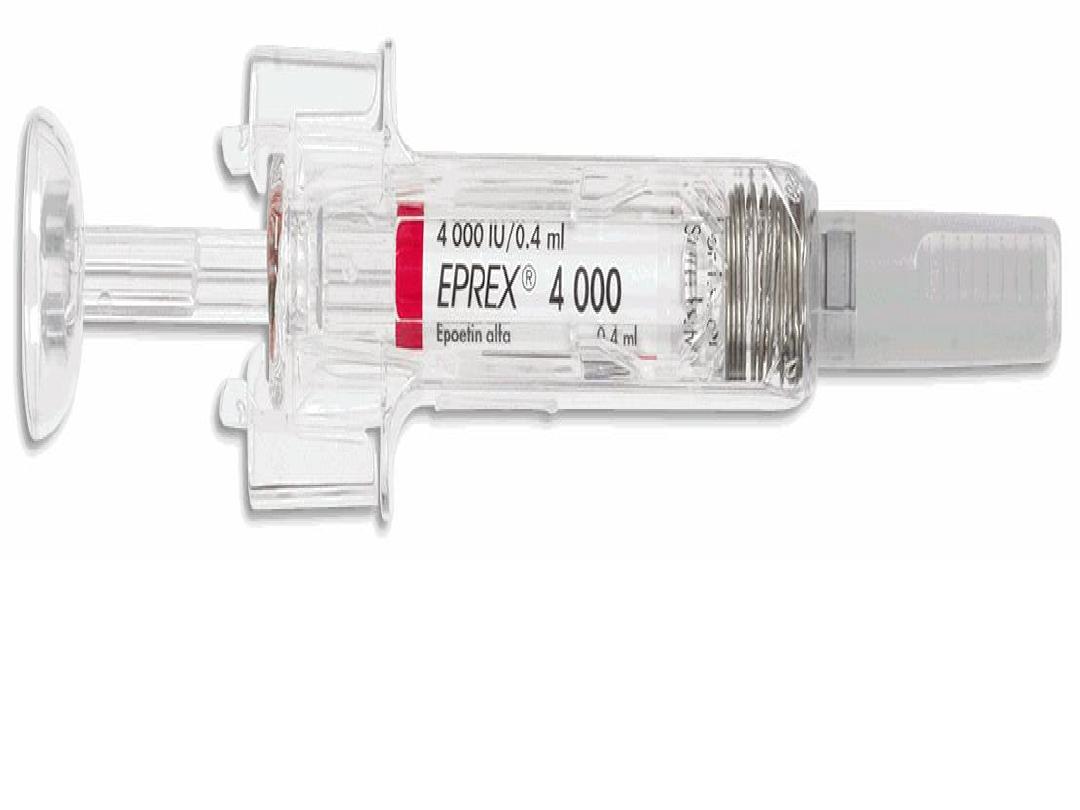
Anemia of Chronic Disease
TUCOM
Dep. of Medicine
5th year
Dr. Hasan I. Sultan
29- 10- 2019

Learning objectives
1. Define anemia of chronic disease
2. Clarify the pathogenesis of anemia of chronic
disease
3. Review the investigations of anemia of chronic
disease
4. Outline the treatment of anemia of chronic
disease

Anemia of chronic disease (ACD)
ACD is define as the anemia that occurs in the setting of
chronic inflammatory, infectious, malignant, and
autoimmune diseases. It is mild, with hemoglobin in the
range of 85–115 g/L, and is usually associated with a normal
MCV (normocytic, normochromic).
Causes of normocytic anemia (MCV 78-98 fl)
• Early iron deficiency
• Aplastic anemia
• Endocrinopathies
• Anemia of chronic disease (ACD)
• Anemia of renal failure
• Mixed nutritional deficiency

Pathogenesis:
• The key regulatory protein that accounts for the findings
characteristic of ACD is hepcidin, which is produced by the
liver, in response to proinflammatory cytokines, especially
IL-6 secretion.
• Hepcidin binds to ferroportin on the membrane of iron-
exporting cells, such as small intestinal enterocytes and
macrophages, internalising the ferroportin and thereby
inhibiting the export of iron from these cells into the
blood.
• The iron remains trapped inside the cells in the form of
ferritin, levels of which are therefore normal or high in the
face of significant anemia.
• Other related factors are an absolute or relative EPO
deficiency, poor iron incorporation into developing
erythrocytes, and shortened erythrocyte survival.

The regulation of iron absorption, uptake and distribution in the body. The transport
of iron is regulated in a similar fashion to enterocytes in other iron-transporting cells
such as macrophages

Diagnosis:
It is often difficult to distinguish ACD associated with a low
MCV from iron deficiency
Examination of the bone marrow may ultimately be
required to assess iron stores directly.

Prussian blue stain for iron in a normal bone marrow (the blue staining
material is iron within the reticuloendothelial cells in bone marrow).
Iron deficiency anemia will develop following depletion of iron stores
from the bone marrow.

Treatment:
• Treatment of the underlying chronic condition
• A trial of oral iron can be given in difficult situations. A
positive response occurs in true iron deficiency but not in
ACD.
• The mainstay of treatment of the anemia of chronic renal
failure is erythropoietin (EPO) and iron replacement.
• Responses to EPO replacement are most dramatic in
patients with multiple myeloma, rheumatoid arthritis,
and in the anemia associated with HIV infection.

Recombinant human erythropoietin (EPO), EPREX: is effective in
correcting the anaemia of CKD.
EPO side effects: Hypertension and thrombosis (including thrombosis
of the AV fistulae used for haemodialysis).

Single choice questions
Q1. A young girl presents to
the doctor with fatigue. She is
otherwise asymptomatic. He
finds that she is anemic.
Which of the following is the
most likely cause of her
anemia?
A. Folate deficiency
B. Hemolysis
C. Iron deficiency
D. Vitamin B12 deficiency
E. Anemia of chronic disease
Q2. An elderly woman is
brought to the clinic by her
husband. He says her gait is
unsteady and her memory is
poor. She is mildly icteric and
slightly agitated. She has
pancytopenia. Which of the
following is the most likely
diagnosis?
A. A brain tumor
B. Acute leukemia
C. Folate deficiency
D. Vitamin B12 deficiency
E. Aplastic anemia

Q3. A 56-year-old man has
anaemia and a positive. Coombs’
test (direct antiglobulin test).
Which of the following
statements is most likely to
be true?
A. The reticulocyte count will be
low
B. The reticulocyte count will be
high
C. The erythrocytes will appear
normal on the blood film
D. Iron stores will be decreased
E. The bilirubin will be normal
Q4. A 25-year-old
woman has normocytic,
normochromic anemia.
What is the most likely
diagnosis?
A. Vitamin B12
deficiency
B. Folic acid deficiency
C. The anemia of
chronic disease
D. Sickle cell disease
E. Sideroblastic
anemia

Single choice questions
Q1. A young girl presents to
the doctor with fatigue. She is
otherwise asymptomatic. He
finds that she is anemic.
Which of the following is the
most likely cause of her
anemia?
A. Folate deficiency
B. Hemolysis
C. Iron deficiency
D. Vitamin B12 deficiency
E. Anemia of chronic disease
Q2. An elderly woman is
brought to the clinic by her
husband. He says her gait is
unsteady and her memory is
poor. She is mildly icteric and
slightly agitated. She has
pancytopenia. Which of the
following is the most likely
diagnosis?
A. A brain tumor
B. Acute leukemia
C. Folate deficiency
D. Vitamin B12 deficiency
E. Aplastic anemia

Q3. A 56-year-old man has
anaemia and a positive. Coombs’
test (direct antiglobulin test).
Which of the following
statements is most likely to
be true?
A. The reticulocyte count will be
low
B. The reticulocyte count will be
high
C. The erythrocytes will appear
normal on the blood film
D. Iron stores will be decreased
E. The bilirubin will be normal
Q4. A 25-year-old
woman has normocytic,
normochromic anemia.
What is the most likely
diagnosis?
A. Vitamin B12
deficiency
B. Folic acid deficiency
C. The anemia of
chronic disease
D. Sickle cell disease
E. Sideroblastic
anemia

Thanks
